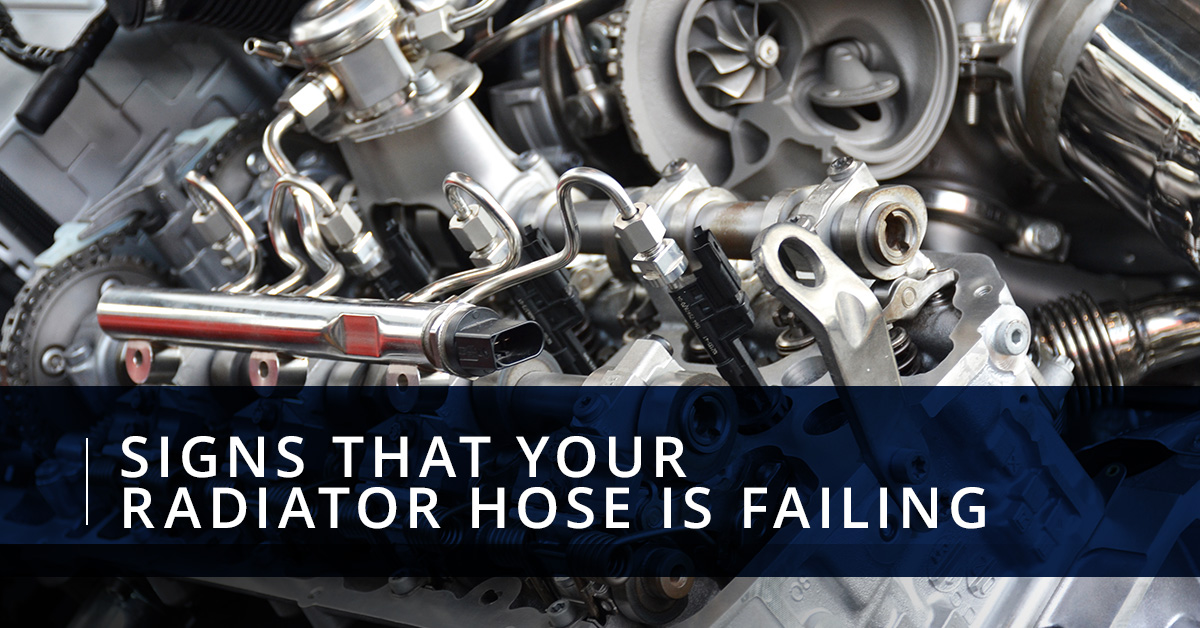
Is it time to upgrade to a silicone coolant hose?
The cooling system in your vehicle includes an upper and lower radiator hose, which are responsible for carrying the coolant to your vehicle’s radiator, where it’s cooled and then returned to the engine. This is integral to the performance of your vehicle because it prevents the engine from overheating. When one or both of your radiator hoses fail, it behooves you to replace them with silicone hoses (be sure to stay tuned for our next blog to learn about the benefits of using a silicone coolant hose!). But, how do you know when your radiator hoses start failing? Here are a few signs to watch out for:

#1. Coolant Leaks
Have you noticed that green fluid has started to seep out from under your vehicle? If so, this means that you have a coolant leak. Coolant has a slightly sweet smell, and it usually comes from the radiator itself, the radiator drain cock or the radiator hose. If you’re not sure where to look for the leak, consider taking your vehicle to a mechanic to spot the source of the problem.
#2. Low Coolant
Are you constantly having to refill your coolant? Or have you noticed that the Low Coolant Light has been coming on in your vehicle? If so, this could be a sign that your radiator hose has started to leak. You should avoid driving on low coolant as much as possible, as it can cause your vehicle to overheat and stall, leaving you stranded on the road. It can also cause serious problems for your engine.
#3. Overheating Engine
Any time your vehicle starts overheating, it means that there is a problem with your cooling system. Due to exposure to high heat and lots of pressure, worn or damaged radiator hoses are most frequently to blame for overheating engines. If you let an engine overheat for too long without addressing it, it can cause permanent damage to the engine, essentially totaling the vehicle.
#4. Collapsed Radiator Hose
When you look under the hood and you spot a collapsed radiator hose, you’ve got a big problem as the hose can no longer transfer coolant properly. Typically, radiator hoses collapse because they are too soft, or because they have been weakened over time. Sometimes, faults in the cooling system can lead to collapsed radiator hoses. Regardless of what caused the collapse, the hose will need to be replaced to protect your vehicle from overheating.
#5. Broken Radiator Hose
Obviously, if the radiator hose is broken, it can’t properly carry coolant to your vehicle’s engine. There are many different types of broken radiator hoses. If you’re inspecting your radiator hose for signs of damage, look for swelling, leaks, holes, cracks or a hose that is too soft or has collapsed. Make it a point to replace your radiator hose at the first sign of damage, as an overheating can cause permanent engine failure.
Find the silicone coolant hoses you need with Flex Technologies.
Rubber used to be the standard for radiator hoses, but silicone’s ability to withstand high temperatures has made silicone hoses a great option for radiators, as well as a wide range of other applications. If you’re in the market for a silicone coolant hose, turn to Flex Technologies today. We offer a wide range of hoses to choose from, and if you don’t find what you need, we can customize a hose for you! We also offer free shipping on every order of $25 or more! Don’t wait until your rubber radiator hose fails. Replace it with a silicone hose today!
 Default Currency
Default Currency
 Mexican Pesos
Mexican Pesos
 Canadian Dollar
Canadian Dollar


